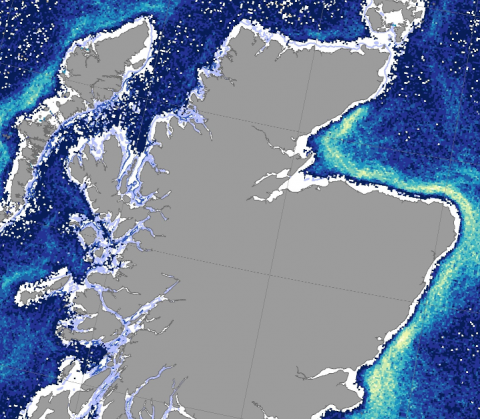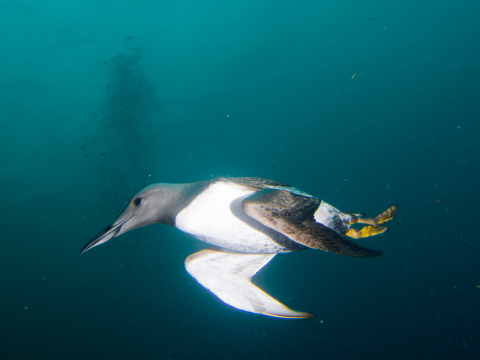Natural resources
Provisioning services
The pelagic environment supports various species of commercial interest, most notably mackerel and herring. However, the large scale at which physical, chemical and biological processes operate in the pelagic environment has inevitable consequences throughout the food chain and other habitat types. Plankton communities, their composition and the timing of their blooms, play a fundamental role in influencing the predator-prey interactions that have a bearing on many commercial species. Some blooms produce toxins that can be harmful to wild or farmed fish/shellfish. Maintaining the health of the pelagic environment will support the viability and sustainability of seafood industries.
Cultural services
Most people only ever experience the pelagic environment from above the water (on boats or planes) or viewed from a distance (from the shore). The aesthetic value of the open sea is unique and powerful, alongside opportunities for watching charismatic wildlife. From an educational and scientific point of view, the pelagic environment offers much interest and opportunity. Wider awareness, enjoyment & understanding can be made more available to the wider public through technology and communication.
Functions
Regulating services
The pelagic environment can be divided in different ways, including by ‘ecohydrodynamic’ region, which relates to stratification (which in turn relates to water depth and currents, for example). Such typologies manifest in different characteristics in their planktonic and microbial communities, which influences key functions such as:
- Climate regulation and oxygen production through assimilation, storage &/or cycling of carbon, and absorption of heat.
- Waste breakdown and detoxification of water by assimilation & cycling.
Avoiding impacts that are likely to compromise these natural functions ensures they can continue to provide a range of benefits to people and nature.
Supporting services
The benefits of the pelagic environment are underpinned by natural processes associated with the habitat and the biological communities it supports. Much of the pelagic zone is low in nutrients (and therefore life) as organic debris sinks to greater depths. However, where upwelling, currents and storms cause mixing of water from depth, phytoplankton grow rapidly and give a huge boost to productivity. The location of some mixing fronts is predictable (e.g. tidal, estuarine), but others less so (e.g. oceanic fronts). Key services associated with the pelagic environment include:
- Biomass production & predator-prey interactions
- Provision of habitat that supports other species (supporting biodiversity)
- Larval/gamete supply (supporting connectivity)
- Nutrient cycling and mixing (especially at ‘fronts’ where distinct water masses meet and mix)
- Formation of a physical barrier (e.g. by currents, thermoclines or major geomorphological features)
Ensuring these natural processes continue enables the ongoing supply of a wide range of benefits to people and nature.
Benefits for people
- Health and well-being
- Food and nutrition
- Clean water and sediments
- Knowledge
- Healthy climate
- Spiritual / cultural
- Tourism and recreation
- Aesthetic benefits
- Nature watching







